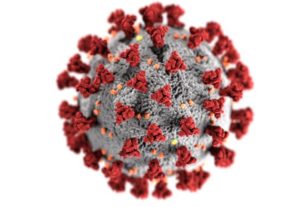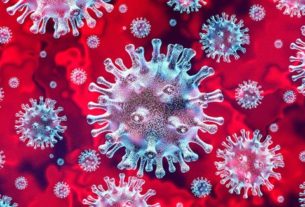From Our Bureau
16TH JULY 2020
The Corona Virus (COVID-19) pandemic situation remained grim globally, with the confirmed cases across the world soaring to 1,33,78,853 and the death toll reaching 5,80,045 in the 216 affected countries and territories, according to the latest update from the World Health Organization (WHO).
Globally, American region continued to be the worst-hit with 70,16,851 confirmed cases and 2,94,301 deaths. Europe came next with 29,87,256 confirmed cases and 2,05,006 deaths. Eastern Mediterranean region reported 13,31,893 confirmed cases and 32,776 deaths.
South-East Asia region’s tally stood at 12,68,923 confirmed cases and 31,297 deaths. African region registered 5,23,403 confirmed cases and 8,819 deaths. Western Pacific region recorded 2,49,786 confirmed cases and 7,833 deaths. WHO Risk Assessment at global level remained very high.
Seventy-five 75 countries have submitted expressions of interest to protect their populations and those of other nations through joining the COVAX Facility, a mechanism designed to guarantee rapid, fair and equitable access to COVID-19 vaccines worldwide. The goal of COVAX is to deliver two billion doses of safe, effective vaccines that have passed regulatory approval and WHO pre-qualification.
WHO and UNICEF have warned of a decline in vaccinations, due to disruptions in delivery caused by the COVID-19 pandemic. UNICEF Executive Director Henrietta Fore noted that “COVID-19 has made previously routine vaccination a daunting challenge” and stressed that further impact on vaccine coverage needs to be avoided, otherwise there is a risk of exchanging one crisis for another.
While the world races to find a vaccine to defeat the COVID-19 pandemic, WHO looks back on all that vaccines have achieved for humanity.
Subject in Focus: Early epidemiological investigations for COVID-19
The identification of any new pathogen, such as SARS-CoV-2, the virus that causes COVID-19, is accompanied by many unknowns. Six months into the pandemic, there are certain characteristics of the virus and the disease it causes that remain unclear, particularly its ability to spread in the human population and its virulence.
To enhance understanding of the characteristics of the COVID-19 (SARS-CoV-2) virus and the disease it causes, WHO has developed a series of early epidemiological protocols, the WHO Unity studies. These protocols enable analysis of the local context, as well as comparison across different settings.
The six currently available WHO Unity study protocols help countries to understand infection amongst close contacts of cases, health workers, or members of households; to understand the extent of infection in the population; and to determine the presence of the virus on different surfaces and environments. The results of these studies help countries to inform public health and social measures to limit further spread of the virus.
To date, 47 countries have implemented at least one of the Unity study protocols. An additional 46 countries have expressed their intent to implement them. More than half of the countries implementing the protocols (55 percent) are low- and middle-income countries, providing an invaluable tool for enhanced surveillance and research equity.
WHO supports countries to develop and implement country-specific protocols, support selection of laboratory tests, and ensure comparability of results between countries. WHO has also procured and delivered laboratory tests to countries that have begun to implement at least one of the studies. This represents 35,820 laboratory tests being sent to 12 low- and middle-income countries, with further tests to be sent to other countries in the coming months. The use of the same laboratory tests across study sites will ensure that the results from different sites can be compared.
Two protocols are currently being developed in collaboration with technical partners. One will enable understanding of the extent of infection in schools and other educational institutions. The other will address COVID-19 in closed settings, which include long-term care facilities, food processing plants, prisons, military barracks, and community venues. (eom)


